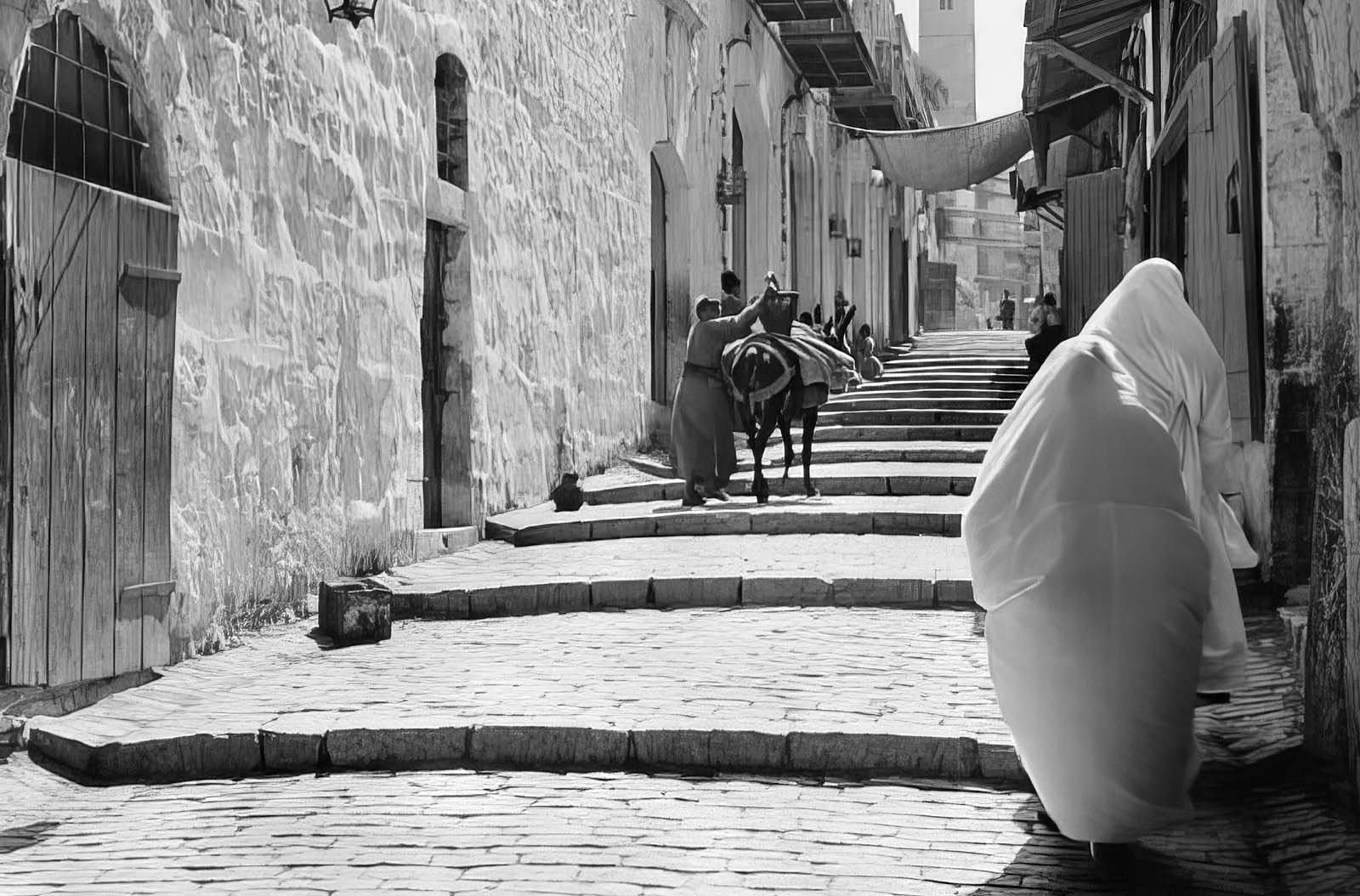Imagine a city with a history as rich and complex as Jerusalem’s. This ancient city, revered by three major religions, has been at the center of countless wars and conquests throughout the centuries.
Each new era brought new rulers, new cultures, and new conflicts, shaping the city into what it is today.
One of the most significant changes in Jerusalem’s history occurred in 1948 with the establishment of Israel.
Since then, the city has been a point of contention, claimed by both Israel and Palestine, divided between Muslims and Jews, and caught in the crossfire of a decades-long conflict.
A crucial period in Jerusalem’s history was its time under the Ottoman Empire.
For centuries, Jerusalem was a melting pot city under Ottoman rule, characterized by a unique blend of cultures and traditions.

A Jewish rabbi living in Jerusalem, called, in the original caption, “The Jew of Jerusalem”, 1900-1910.
During this time, Jerusalem thrived as a center of religious pilgrimage and scholarship, drawing Muslims, Christians, and Jews from around the world.
The Ottoman authorities, while maintaining control over the city, allowed for a degree of religious and cultural autonomy, leading to a vibrant and diverse community.
However, the late 19th and early 20th centuries brought significant changes to Jerusalem.
The rise of European imperialism and the decline of the Ottoman Empire led to increased European influence in the region.
This period also saw the growth of nationalist movements, including Zionism, which sought to establish a Jewish homeland in Palestine.
The First World War marked the end of Ottoman rule in the region, with Jerusalem falling under British control in 1917.

A woman carries her wares to the marketplace, 1900s.
From 1922 to 1948 the total population of the city rose from 52,000 to 165,000, comprising two-thirds Jews and one-third Arabs (Muslims and Christians).
Relations between Arab Christians and Muslims and the growing Jewish population in Jerusalem deteriorated, resulting in recurring unrest.
In Jerusalem, in particular, Arab riots occurred in 1920 and in 1929.
Under the British, new garden suburbs were built in the western and northern parts of the city and institutions of higher learning such as the Hebrew University were founded.

A Yemenite Jew, 1898-1914.
As the British Mandate for Palestine was expiring, the 1947 UN Partition Plan recommended “the creation of a special international regime in the City of Jerusalem, constituting it as a corpus separatum under the administration of the UN.”
The international regime (which also included the city of Bethlehem) was to remain in force for a period of ten years, whereupon a referendum was to be held in which the residents were to decide the future regime of their city.
However, this plan was not implemented, as the 1948 war erupted, while the British withdrew from Palestine and Israel declared its independence.

A fruit vendor displays his goods, 1900-1920.

A donkey waits in the street of arches, 1900s.

A Bedouin man, 1900s.

A small coffee house spills out onto the streets, 1910s.

A street scene from David Street, 1895-1910.

A Bedouin woman, 1910s.

A procession leaves Jerusalem, on their way to Nebi Musa to visit the tomb of Moses.

Three women and their children, Bethlehem, 1936.

A mother carries her child with a jug on her head. Beersheba, 1900-1920.

A group of people, referred to in the original caption as “natives,” are seated for a meal.

A woman barters over the price of bread, 1900-1920.

A Bedouin woman poses for a photograph, 1900s.

A man walks down the streets in the Jewish quarters, 1920-1933.

Artisans work with mother of pearl, 1898-1914.

A woman sits in front of the village oven, 1898-1914.

A worker drills holes into beads, 1900-1920.

Two women working at a mill, 1898-1914.

Lepers beg for alms, circa 1900-1920.

A vendor sells kebab meat and bread.

Workers carrying waterskins, 1900-1920.

A group of women carrying water jars on their heads, 1900-1920.

A mother carries her baby, Beersheba, circa 1900-1920.

Workers beat olives out of a tree, 1900-1920.

A young girl picks olives, 1900-1920.

Workers crush olives with the broken column of an ancient building, Beit Jibrin, 1920-1933.

A coffee shop with a gramophone, 1900-1920.

A young Bedouin boy wearing a cartridge belt, 1898-1914.

A group of beggars, 1900-1920.

A characteristic city street in Jerusalem, 1900-1920.

Two men smoke on the streets of Bethlehem, 1900-1920.

A Druze Sheikh, 1900-1920.

A grocery shop, 1900-1920.

Two women stop to talk, 1898-1914.

A group of Bedouins prepares coffee in a tent, 1936.

A woman in Bethlehem, 1900-1920.

A porter carrying 50 empty petrol tins on his back, 1914-1918.

A woman walks below the arch of ecce homo, 1900s.

A Ramallah woman in an embroidered dress, 1940s.

A woman poses with a jug on her head, 1900s.

vegetable market on the streets of Nazareth, 1930s.

A woman, labeled, in the original caption, as a “peasant girl”, 1900-1920.
(Photo credit: Library of Congress).
